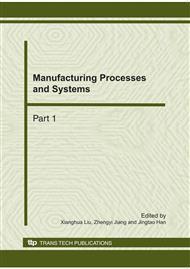p.1594
p.1600
p.1607
p.1611
p.1619
p.1623
p.1629
p.1634
p.1639
Synthesis and Properties Study of Pr Doped(Bi0.5Na0.5)TiO3 Produced Using the Soft Combustion Technique
Abstract:
In this work, Praseodymium (Pr) doped bismuth sodium titanate, (Bi0.5Na0.5)TiO3 (BNT) is successfully produced using the soft combustion technique. The effects of Pr doping on stoichiometry, microstructure, density and dielectric properties are studied. Pure phase can be obtained in all samples containing 0, 5, 10 and 20% Pr after calcination at 800°C for three hours. The powders are then pressed into pellets and sintered at 1050°C for three hours. The crystallite size and grain size decrease with increasing Pr amount because Pr acts as grain growth inhibitor. Maximum density is obtained in 5% Pr doped BNT, beyond which density decreasing. Maximum dielectric constant of 756 was obtained in 5% Pr doped BNT and decreases beyond that. Pr doped in BNT also causes dielectric loss to decrease. The result is in agreement with structural, microstructure and density analysis.
Info:
Periodical:
Pages:
1619-1622
Citation:
Online since:
October 2010
Keywords:
Price:
Сopyright:
© 2011 Trans Tech Publications Ltd. All Rights Reserved
Share:
Citation:


